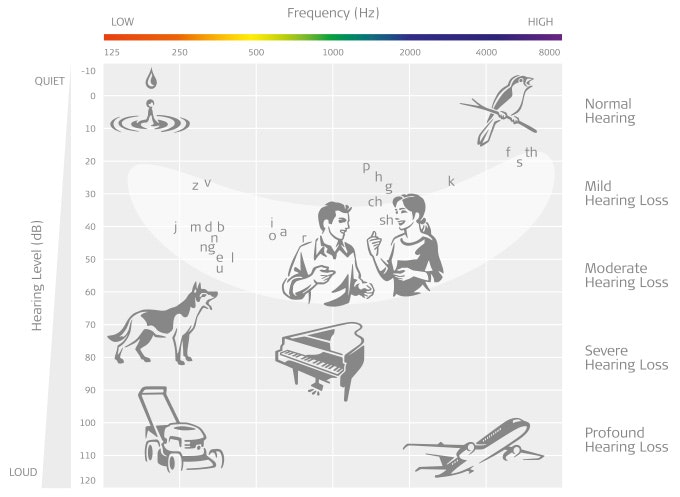The Audiogram
An audiogram is a diagram used by hearing professionals to show visually how well you can hear. An audiogram can show if you have hearing loss, what type of hearing loss you might have, and it can help identify an appropriate hearing solution.Visualizing Hearing Loss
An audiogram is a graph that shows the softest sounds that someone can hear at specific frequencies. High-pitched sounds, for example a bird singing or a child squealing, have a high frequency. Sounds at low frequencies have a lower pitch, such as a dog barking or the noise of a lawnmower.
During a hearing test, an audiologist plays tones, one frequency at a time. The softest tone that a person can hear at each frequency is marked on the audiogram. The chart below shows where everyday sounds would be on the audiogram.
Along the top of an audiogram, a range of sound frequencies is shown. As you move from left to right on the audiogram, the frequencies increase, which means the tones become higher pitched. On the left side of the audiogram, the loudness of a sound signal is depicted. As you move from top to bottom on the audiogram, the loudness increases.
Mild Hearing Loss
With mild hearing loss, you cannot hear many sounds softer than 21–40 dB. At this level, you can hear a person’s voice, which is about 65 dB, but not quieter sounds like a ticking clock, dripping faucet, or the softer sounds of speech.
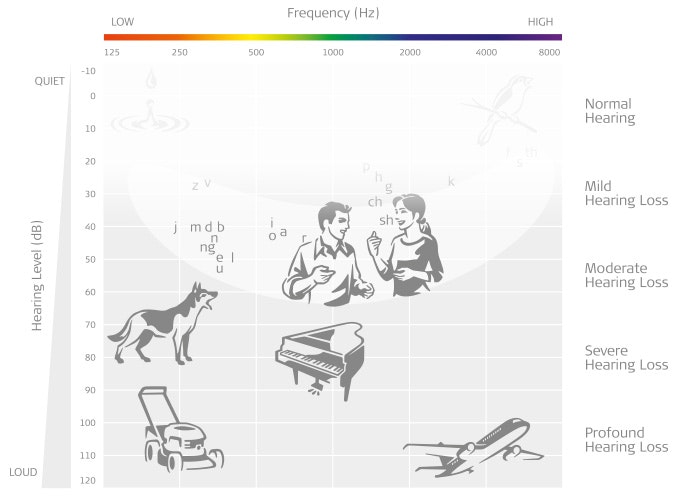
Moderate Hearing Loss
With moderate hearing loss, you cannot hear sounds softer than 41–70 dB. This means that you may be unable to understand normal conversation or hear the ringing of a telephone. A moderate degree of hearing loss, if untreated, can affect your daily life in a significant way.
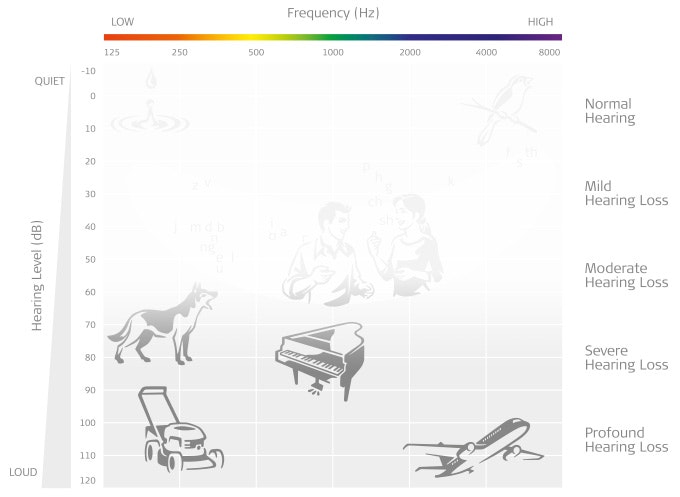
Severe Hearing Loss
With severe hearing loss, you cannot hear sounds softer than 71–90 dB. This means that you may not be able to hear sounds like loud conversation or traffic noise. Severe hearing loss will almost always have a big impact on a person’s daily life.
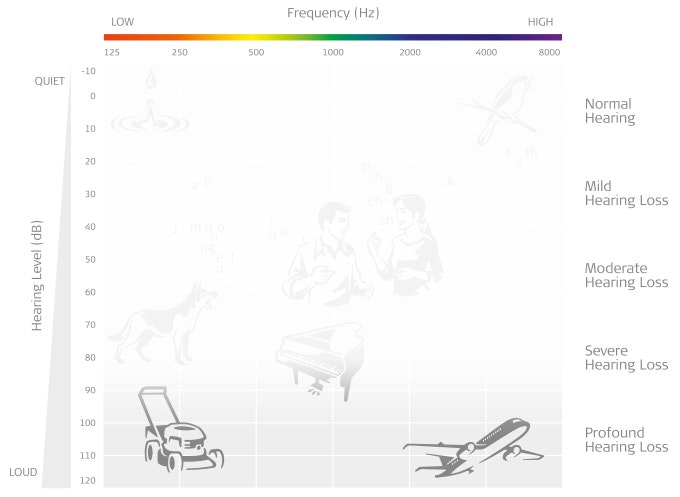
Profound Hearing Loss
Profound hearing loss is the most significant degree of hearing loss. With profound hearing loss, you cannot hear sounds softer than 91–120 dB or more. This means that you may not even be able to hear very loud sounds like airplane engines, trucks moving down the road, or fire alarms.
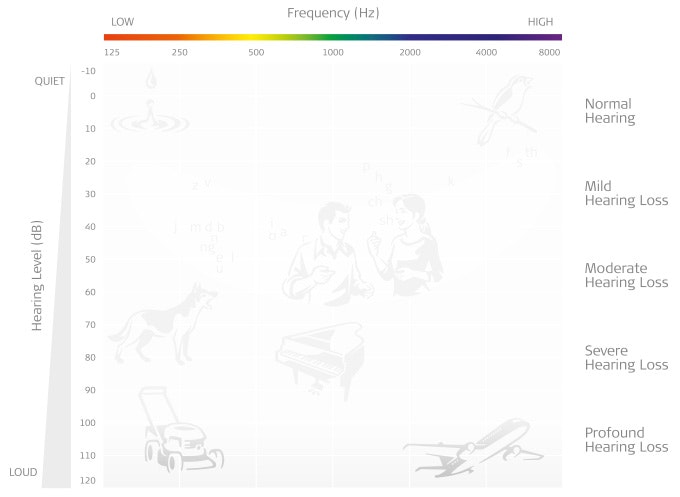
Free Hearing Evaluation
Already have an audiogram from a hearing specialist? Our experts can assess your audiogram and see if one of our hearing solutions could help you or your loved one.

